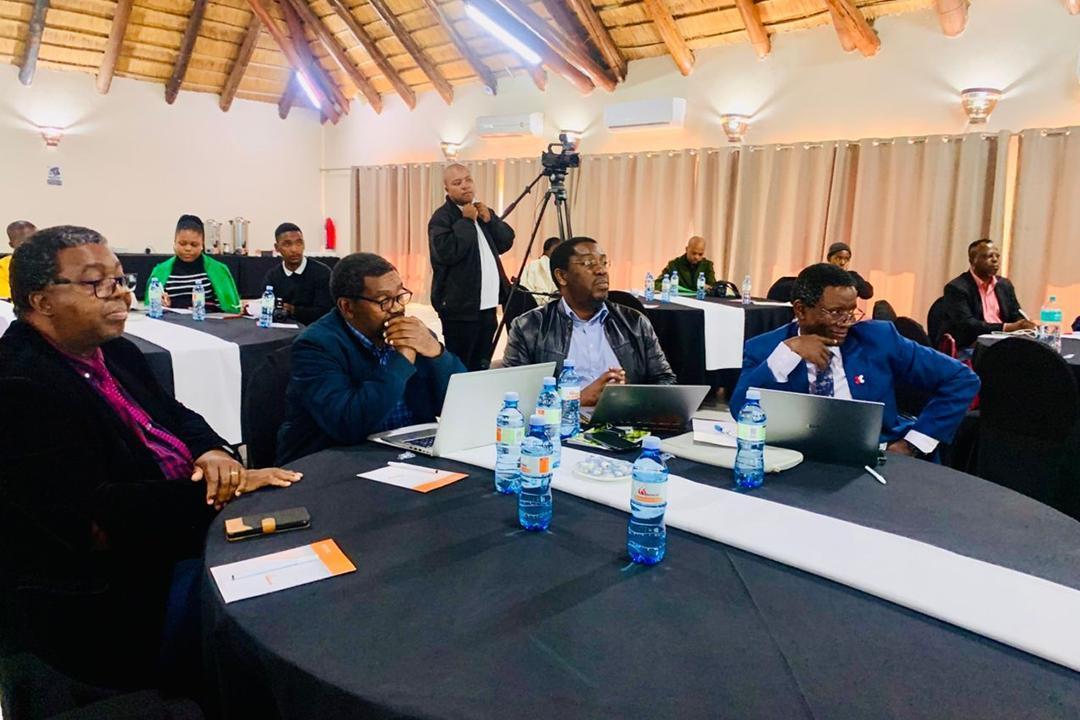Africa-Press – Eswatini. A swift, strategic and united response is underway.
With E40 million mobilised, 60 new officers deployed, and cutting-edge surveillance strategies rolled out, Government is demonstrating firm leadership in containing the latest outbreak of Foot and Mouth Disease (FMD), and preserving the nation’s livestock industry.
This decisive action is a collaboration between the Ministry of Agriculture and the National Disaster Management Agency (NDMA), working to protect food security, rural livelihoods and economic stability.
“We have responded swiftly with funds, manpower, vehicles and vaccines,” said Ministry of Agriculture Principal Secretary Sydney Simelane during a media sensitisation workshop this week. “Branding of vaccinated cattle is ongoing and patrols have been intensified.”
Firm Measures to Safeguard Livelihoods
As part of the response, cattle movement is tightly regulated to prevent spread. Simelane emphasized that compliance is not optional: “Livestock moving without permits will be confiscated. Anyone defying quarantine orders is subject to fines or imprisonment,” he said.
A special government gazette now enforces penalties of up to E10 000 or two years in jail for violations.
Preserving Borders, Protecting Herds
Veterinary and Livestock Services Director Dr Roland Dlamini referenced existing legislation, including the Animal Diseases Act of 1965, that empowers government to create guard zones, destroy contaminated goods, and halt animal movement.
Dr Zizwe Cindzi, presenting the national response plan, urged citizens to support containment by respecting fencing installations. “Fence vandalism is sabotaging efforts and putting the entire nation’s food supply at risk,” he said.
Livestock theft has also prompted police involvement. “Movement of animals is now only allowed with a police escort and proper documentation,” he added.
Understanding the Current Outbreak
The SAT 2 strain of FMD was confirmed through lab testing on 19 May, making this the fourth outbreak in 24 years. It’s believed to have entered Eswatini from neighbouring KwaZulu-Natal.
Vaccinations are now underway in affected zones, with some animals to be humanely culled where necessary. Control zones and buffer areas are clearly demarcated, with real-time monitoring in place.
Trusted Communication: Media as a Partner
Recognising the media’s role in calming fears and informing communities, NDMA Communications Manager Magman Mahlalela called for responsible reporting.
“Sensationalism won’t help, but accurate reporting will,” he said.
Veterinarian Dr Nhlanhla Shongwe added: “This is a technical matter. Please wait for verified updates. Let’s work together to keep the public informed without causing panic.”
Tech-Driven Tracking and Support
To ensure traceability, all vaccinated cattle are being both ear-tagged and specially branded with dip tank-linked marks. Emergency hotline 112 has been reactivated, and social media is also being used to report symptoms and violations.
“If the virus crosses to pigs, we are ready to act immediately,” Dr Cindzi assured.
Empowering Farmers and Advancing Research
Farmer training is already taking place in hotspot areas to help communities detect symptoms early and understand prevention. Simultaneously, local veterinary labs are now equipped to carry out FMD testing, a major step forward in self-reliant disease management.
“This will drastically reduce waiting times for results and allow quicker interventions,” said Dr Cindzi.
BOTTOM LINE: RESPOND, REPORT, RECOVER
Despite a temporary regional beef ban, government stakeholders remain confident. With strong leadership, community cooperation, and modern tools, Eswatini is in a solid position to overcome the outbreak.
As Dr Shongwe said: “If we act fast, talk straight, and stay united, we’ll beat this.”
For More News And Analysis About Eswatini Follow Africa-Press







